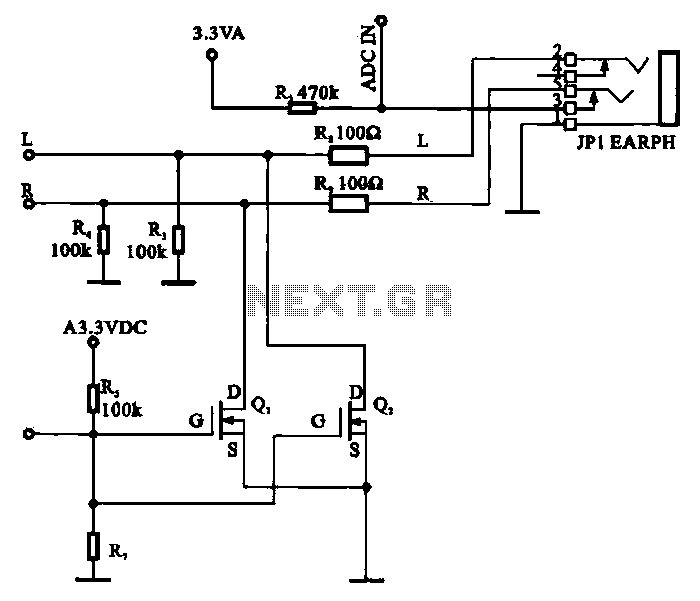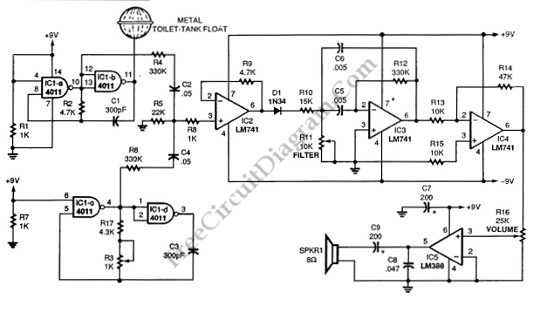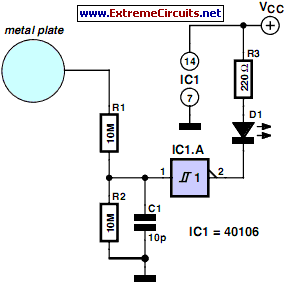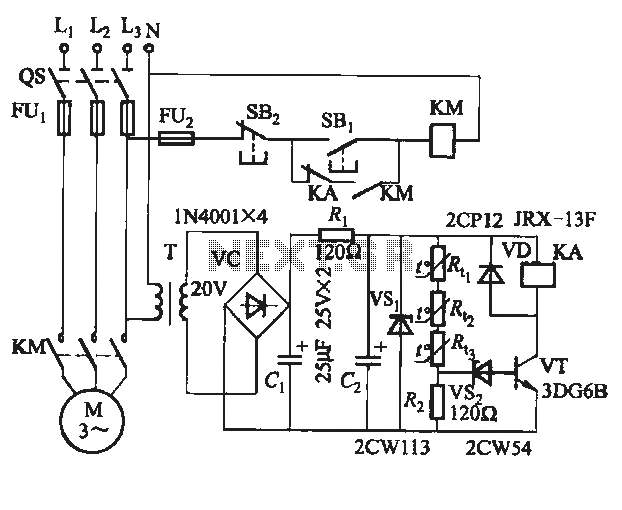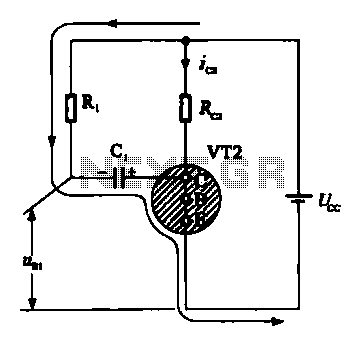
Water heaters electronic ignition circuit

An electronic ignition circuit for a water heater is presented. When the faucet is opened, the switch activates a 3V battery. As capacitor C2 requires time to charge, transistor VT6 remains off. Meanwhile, capacitor C3 charges, allowing transistors VT7 and VT8 to conduct. This action energizes the gas supply solenoid valve (BK), opening the gas valve and enabling gas flow.
The electronic ignition circuit is designed to initiate the gas supply for a water heater in response to the demand for hot water. The operation begins when the user opens the faucet, which closes switch K, thus connecting the 3V battery to the circuit. This battery provides the necessary power for the entire ignition process.
Initially, capacitor C2 is in a charging state, which prevents transistor VT6 from turning on. This is a crucial step, as it ensures that the circuit does not inadvertently activate while the system is in an idle state. Once C2 has charged sufficiently, it allows the circuit to progress to the next stage.
Simultaneously, capacitor C3 begins to charge. The charging of C3 is vital, as it influences the operation of transistors VT7 and VT8. Once C3 reaches a certain voltage threshold, it enables VT7 and VT8 to conduct. The conduction of these transistors serves as a signal to the gas supply solenoid valve (BK), allowing it to receive power.
As a result, the solenoid valve is energized, which opens the gas valve. This action initiates the flow of gas, preparing the water heater for operation. The design of this circuit ensures that the ignition process is both efficient and safe, as it relies on the controlled charging of capacitors and the sequential activation of transistors to manage the gas supply effectively. Overall, this electronic ignition circuit exemplifies a reliable method for activating a water heater in response to user demand.Electronic ignition circuit for the water heater is shown. When you open the faucet, switch K 3V battery, since the charging C2 need room, so VT6 is off, the power supply while the C3, charging so VT7, VT8 conduction, so that the gas supply (gas) solenoid valve BK start winding is energized, the gas valve open, gas began.
The electronic ignition circuit is designed to initiate the gas supply for a water heater in response to the demand for hot water. The operation begins when the user opens the faucet, which closes switch K, thus connecting the 3V battery to the circuit. This battery provides the necessary power for the entire ignition process.
Initially, capacitor C2 is in a charging state, which prevents transistor VT6 from turning on. This is a crucial step, as it ensures that the circuit does not inadvertently activate while the system is in an idle state. Once C2 has charged sufficiently, it allows the circuit to progress to the next stage.
Simultaneously, capacitor C3 begins to charge. The charging of C3 is vital, as it influences the operation of transistors VT7 and VT8. Once C3 reaches a certain voltage threshold, it enables VT7 and VT8 to conduct. The conduction of these transistors serves as a signal to the gas supply solenoid valve (BK), allowing it to receive power.
As a result, the solenoid valve is energized, which opens the gas valve. This action initiates the flow of gas, preparing the water heater for operation. The design of this circuit ensures that the ignition process is both efficient and safe, as it relies on the controlled charging of capacitors and the sequential activation of transistors to manage the gas supply effectively. Overall, this electronic ignition circuit exemplifies a reliable method for activating a water heater in response to user demand.Electronic ignition circuit for the water heater is shown. When you open the faucet, switch K 3V battery, since the charging C2 need room, so VT6 is off, the power supply while the C3, charging so VT7, VT8 conduction, so that the gas supply (gas) solenoid valve BK start winding is energized, the gas valve open, gas began.

